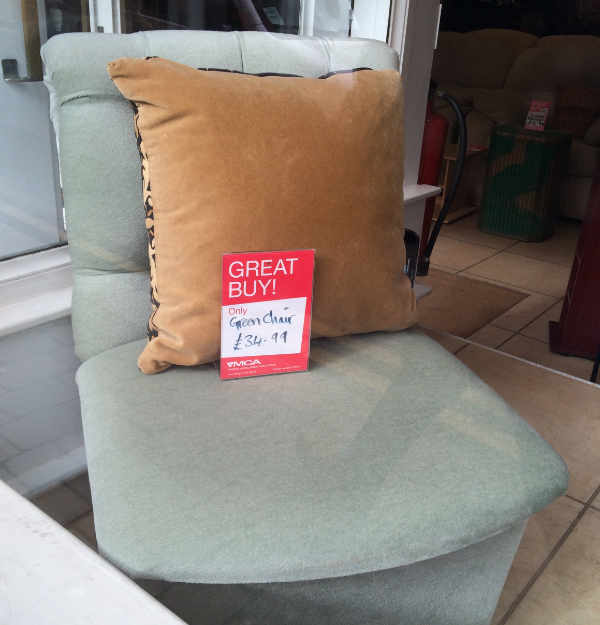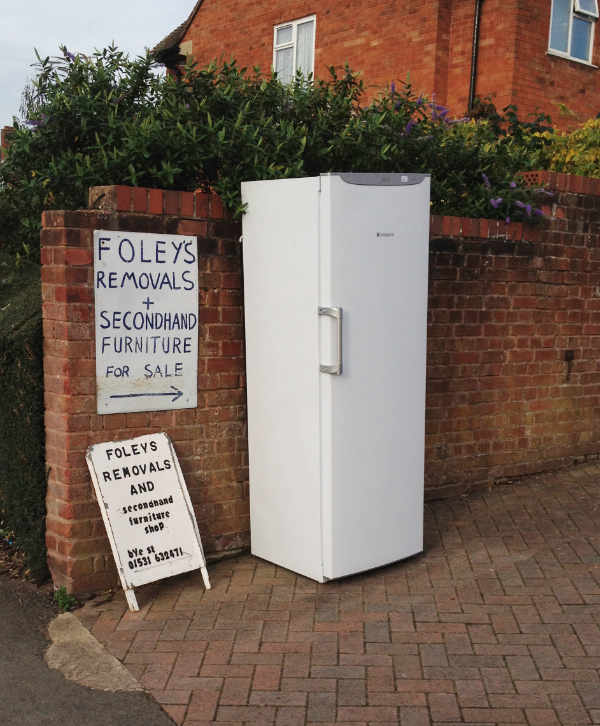Since my student days of ‘skip raiding’ I have always favoured second-hand, pre-loved furniture over new stuff. Apart from a few beds and a sofa 30 years ago, most of our furniture, and some of our curtains, have been acquired gradually from charity or second-hand shops, given by family, or bought at local auctions. We’ve got an old school art cupboard still smelling of pencils and a dressing table with drawers lined with 1950’s wallpaper. I like that these pieces have ‘lived’ in other places.
Why buy second-hand furniture?
Buying second-hand also avoids the ‘off-gassing’ (VOCs) of new furniture. Utilising natural materials rather than the flat-packed chipboard option. The furniture is better made: more joints and fewer screws! There is pride in the work and craftsmanship. That well-worn phrase of William Morris “Have nothing in your house that you do not know to be useful, or believe to be beautiful.” is part of the appeal. You have theability to create different looks; bespoke looks without bespoke prices! Okay it takes more time, but that becomes part of the fun.
Buying at auction is a lot easier now that you can bid on-line and e-bay has helped revolutionise the second-hand market – whether it’s cars, clothes or cupboards! Sites such as Freecycle link those wanting ‘stuff’ with those looking for it! Auction sites such as Easyliveauction and saleroom websites make finding second-hand gems at local auctions a breeze. All helping re-use items, which in-turn reduces the demand on resources and lessens the amount ending up in landfill or worse still ‘fly-tipped’.
Help charities raise money and help the enviroment
 Local furniture recycling projects are great for feeding into the circular economy – often offering training and employment opportunities. Upcycling is fun. Charities such as the British Heart Foundation, the YMCA, and Oxfam have separate shops to sell furniture and electricals. Although a word of caution here – second-hand appliances may not always be as efficient as they could be, so could end up costing more in running costs. Old fridges and freezers, because they are on all the time, can be problematic.
Local furniture recycling projects are great for feeding into the circular economy – often offering training and employment opportunities. Upcycling is fun. Charities such as the British Heart Foundation, the YMCA, and Oxfam have separate shops to sell furniture and electricals. Although a word of caution here – second-hand appliances may not always be as efficient as they could be, so could end up costing more in running costs. Old fridges and freezers, because they are on all the time, can be problematic.

Slow food, Slow fashion… perhaps we need a new movement supporting Slow furniture!
Interior design obviously goes in trends and glossy magazines and social media sites such as pinterest seek to persuade us to get the current look; Stripped pine, minimalist, post war utility, scandi, urban chic, ‘shabby chic’, Bo-Ho, opulent, funky, 50’s, 70’s … we are sold an image – and it’s obviously a growth area as fashion retailers such as H&M and Zara have moved into the homeware market. So just like ‘slow food’ and ‘slow fashion’ perhaps we need a new movement supporting ‘slow furniture’! Who knows what the next trend will be – maybe dark brown antique furniture will come back, or it will be painted white as they did in the seventies, as they say “What goes around comes around”!